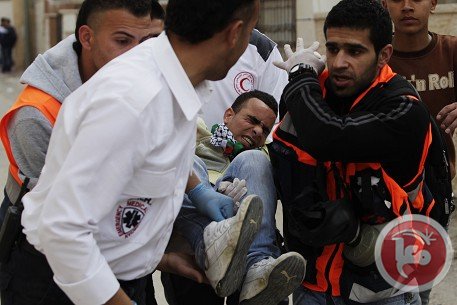Tag: Qalandia
-
Three killed in Qalandiya: Protests spread across West Bank
26th August 2013 | International Solidarity Movement, Ramallah Team | Qalandiya Refugee Camp, Occupied Palestine At around 2am on 26th August 2013, eleven military jeeps invaded Qalandiya refugee camp during an operation to arrest a recently released prisoner. Residents of the camp tried to stop the army from arresting the man by throwing stones at…
-
Swedish peace activist beaten up by Israeli Occupation Forces
by Jonas Weber and Jeff 1 April 2012 | International Solidarity Movement, West Bank A Swedish peace activist at the Land Day demonstration in Qalandia, outside of Ramallah, was arrested. During the arrest he was kicked and beaten by the Israeli soldiers. “It happened so fast, I never understood what was going on before I…
-
Red Crescent medics treat 339 protesters in the West Bank
30 March 2012 | Ma’an News Agency BETHLEHEM (Ma’an) — The Palestinian Red Crescent treated 339 protesters on Friday at protests around the West Bank to mark Land Day, a spokesman said. Muhammad Ayyad told Ma’an that five people were seriously injured and 55 hospitalized as protesters commemorated six Palestinians who were killed by Israeli…


